List of Authors
>>About this blog
Recent blog post
|
[Silver]
August 25, 2017 09:00
The Tohoku region of Nihonbashi Honishi-cho is located in the area facing Kaji-cho, Chiyoda-ku, and is home to many restaurants. Today, I came to explore the terrain of the neighborhood of Honishi-cho.
I was fascinated by the store name "Cul de sac" and entered lunch. It's a shop at the end of the back.
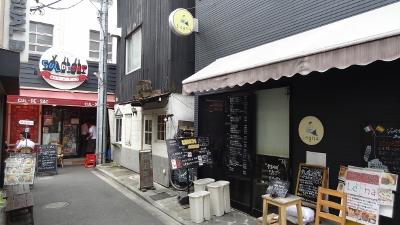
The name of this store is the same as the name of the French territory San Martan Island, where I was stationed 40 years ago. The meaning means "dead-end" or "bag alley". Topographically, restaurants are lined up in and around the large building facing public roads.
It was just around 13 o'clock, so I was invited to the store and recommended salad, freshly baked roast beef about 1 cm thick,
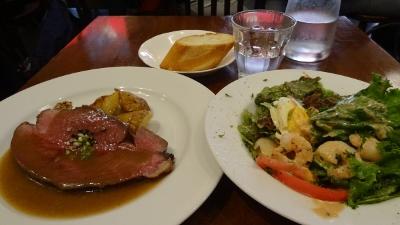
I had a cafe and dessert chiffon cake.
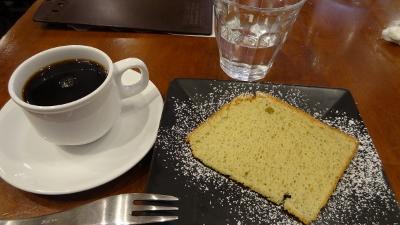
There  are many young are many young  female customers because they offer delicious food at reasonable prices, and two French male customers came to the next table. One is the same as me. The other men were ordering vissisoi soup, French pork saute. ) female customers because they offer delicious food at reasonable prices, and two French male customers came to the next table. One is the same as me. The other men were ordering vissisoi soup, French pork saute. )
The lunch was tax-included and was ¥1,000 (as of 20170818), and there were many wine bottles in the store, so I decided to come in the evening this time. The address of the shop is 4-4-16 Nihonbashi Honishicho. Please check here for access to the store. http://www.id3.jp/cul/ bottles in the store, so I decided to come in the evening this time. The address of the shop is 4-4-16 Nihonbashi Honishicho. Please check here for access to the store. http://www.id3.jp/cul/
[Silver]
August 22, 2017 14:00
Speaking of Nihonbashi Honishi-cho, it was once famous as the location of Koza and now the Bank of Japan. Shirahata Inari Shrine is enshrined at 4-5-16 Nihonbashi Honishicho and attracts the reverence of local people.
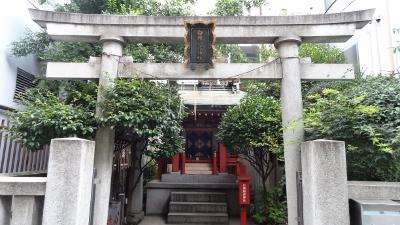
I went to visit a shrine on Friday in August. The precincts are carefully swepted, and we use water and two-tone beats.
Camellia around the approach to the shrine, and "Natsume", which blocks the harsh summer heat, gently greeted me.
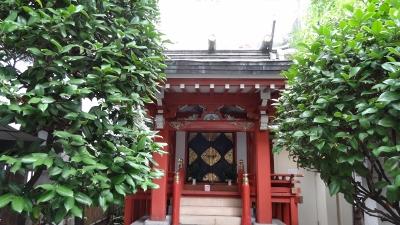
I felt very refreshed. I would like to express my deep respect to the people of the town council who are taking care of me. (It seems that you can visit only on fire and Friday. It seems to be locked at night. I think vermilion seal stamp's request is difficult.)
You can see the history from the roadside. Please see this history posted by the Shirahata Inari Shrine Reverence Society and Nihonbashi Honishimachi Town Association.
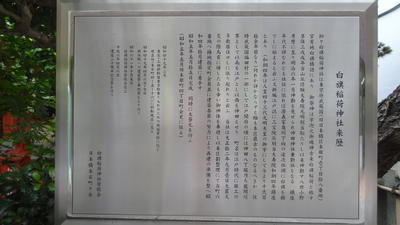 
I have copied your history for those who are interested. (Please note that some hiragana has been added and punctuation has been added.)
"History of Shirahata Inari Shrine
The suppression flag Inari Shrine is located on the government-owned land Shirahata Hashizume, Musashi-kuni, Tokyo (formerly 1-chome, Hongincho, Nihonbashi-ku), and enshrined deity is the god of Ukano. Since ancient times, it is called Shirahata Inari. Since the Kyoho Sanin Inu, Toyama School Shugen Daijuin Motoaki has been working separately, he has been a shrine. After arriving at Hidemaro Ono of the eighth generation, he was exempted from Shinto shrine in Meiji 6 and became Kanda Shrine Kaneshinsha. Although the age of the shrine is unknown, according to the company biography, it is said that Yoshiie Minamotono begins with a white flag on the head of the shrine as soon as Oshu descends. In addition, it says, "In the new edition of Edo magazine, Sanboin Temple School Betsudai Kotobuki-in 711 (711), enshrined in 711", and should it be the oldest in the main ward? In the past, it was part of Fukuda Village in Musashi Country, and at the time of the opening of Edo, Kanda Hatchobori Nochi Ryukangawakai was south of Edo and west of Kanda. The name of the town was derived from the residence of a large number of silver workers during the Edo period. We returned to Karasuari in the event of a major earthquake on September 1, 1923, but fortunately we evacuated the shrine, and since then we have designated a resettlement to the sixth place of our town by land readjustment, and we are preparing for reconstruction by the efforts of the members of the town council and the building committee. Start construction in January 1929. Completed on May 5, 1930. At the same time, a large festival was held (according to the history of the former Hongincho 4-chome Association in May 1930)
February 1974 Relocated to the current location (4-5-16 Honishimachi) in response to the acquisition of land for entering Tokyo Station on the Tohoku-Joetsu Shinkansen.
April 6 and 7, 1974 relocation ceremony celebrates the celebration of New shrine hall
Establishment of the Shirahata Inari Shrine Reverence Society at the end of October 1986
On April 6, 1994, the 20th anniversary celebration of the Transition
Shirahata Inari Shrine Reverence Party
Nihonbashi Honishimachi Town Association
[Silver]
August 16, 2017 16:00
On a hot day in August, when I went up D1 at Nihombashi Station on the Toei Asakusa Line, a foreign couple  seemed to be in trouble with seemed to be in trouble with a large bagage. a large bagage.
Setsusuke's silver-zou comes close and I'm sorry. May I help you? I said, but I couldn't understand anything, so when I switched to Spanish, I answered "Kabuto-cho". If it's Kabuto-cho, it's a place where the Tokyo Stock Exchange is located, pointing to the north and saying, "That's right!" "I said, but I didn't seem to have a point.
My husband had a map, so please show me an email with pictures showing the corners of the building, etc.
"That's right. " 、 Vamos !   I started walking. I started walking.
I'm relieved to be able to guide you safely. Thank you very much.
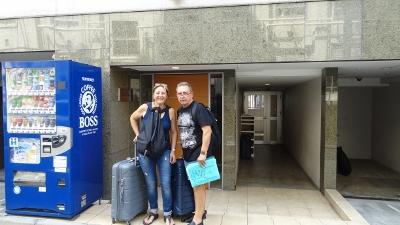
The area where "Center Hotel Tokyo: 15-13 Nihonbashi Kabutocho" and "Shimbamba Kuminkan: 11-9 Nihonbashi Kabutocho" is located is Kabuto-cho. I learned from a foreigner.
*By the way, Kayabacho is Kayabacho 1-chome on the north side of Eitai-dori St. and 2-chome and 3-chome on the south side of Eitai-dori St.
[Silver]
August 15, 2017 12:00
The Smile Hotel is located 30 meters, about 1 minute, up Exit 3 of Kayabacho Station on the Tokyo Metro Tozai Line.
In the basement of the hotel, there is  a restaurant Shelbourg a restaurant Shelbourg . .
It was a daily menu of ¥930, and on this day there was a serloin grill and a weekly fish lunch. There is a "drink bar" system where soups and drinks are free for +200 yen. I enjoyed beef consommé and cream cone stew.
My friend is sirloin grille that seems to be over 150g. The meat stood jujuju and steam  on the table. on the table.
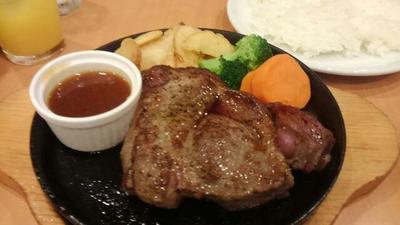
I'm a saute of a big mechajiki fillet. Ummai ! Gostozo!
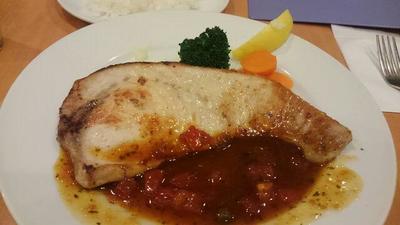
The coffee after the meal  was also delicious, and it was full of vitality with a fulfilling feeling. was also delicious, and it was full of vitality with a fulfilling feeling.
< For a limited time, we were holding an event For a limited time, we were holding an event  of ¥ 980 for a single of ¥ 980 for a single  wine for 60 minutes.>You can't miss the future event. wine for 60 minutes.>You can't miss the future event.
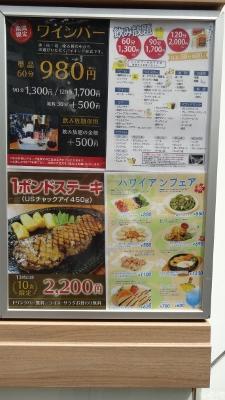
After Five,  in in  Sherbour, even if it rains! Sherbour, even if it rains! 
Click here for the hotel and restaurant website.
http://www.chuo-kanko.or.jp/#we-page-entry?spot=118661&cat=10960&pageno=3&type=spot&theme=theme-1
 Click here for information on the restaurant Shellbourg. Click here for information on the restaurant Shellbourg.
http://www.cherbourg.jp/tokyonihombashi/
[Silver]
August 14, 2017 09:00
The Bridgestone Museum of Art on Chuo-dori after a long absence (currently closed). The New Museum is scheduled to open in the fall of 2019) We took a walk in the direction of Echizenya.
After seeing a number of wonderful embroidery at Echizenya's storefront, I decided to explore the underground shopping mall of Tokyo Station today.
When you go down the nearest underpass, there are many shops in business.
At the Marugoto Museum parade, which is held every year from the end of October to the beginning of November.
We use this facility and have lunch of Anchina short.
What I visited today is a shop right down the stairs, a set of 948 delicious udon and small bowls, which can be eaten at a low price.
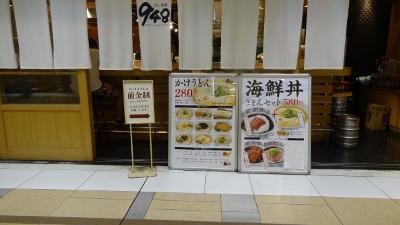
For lunch, we will give you an appropriate amount at a reasonable price.

The seafood bowl / udon set is a seafood bowl using delicious oudon and red tuna.
The price is ¥580, including tax. From 4 o'clock in the evening, you can enjoy Kushikatsu and sake set ¥780. I think it's a worthy shop than a drinking tavern.
At the nearest Echizenya, there are plenty of handicraft supplies and wonderful works on display.
I always want to enter the store, but it's popular and shy with female customers. Click here for the website of Echizenya.
http://www.echizen-ya.co.jp/
[Silver]
August 9, 2017 09:00
The statue of Jan Jooss Ten is located in the separation zone between Tokyo Station Underground Shopping Center and Yaesu Street.
The bronze statue of the underground shopping mall at Tokyo Station was only gone more than 10 years ago, and the location was quite moving.
The information center in Main Abe New Underground, which descended from the central exit of Yaesu, gave me a very kind reception and told me the location.
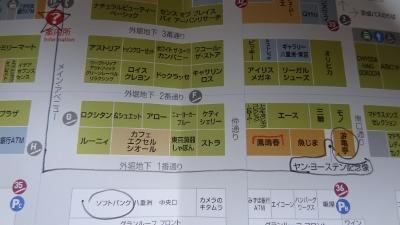
From the Yaesu Exit of Tokyo Station, go down from Yaesu Chuoguchi, turn right at the corner of SoftBank, pass the Chinese food "Hon Naruharu", next to the ramen shop  "Yugametei", Jan Jooss Ten and Usuki, Kyushu. The route shown by the Dutch ship "Leafde" "Yugametei", Jan Jooss Ten and Usuki, Kyushu. The route shown by the Dutch ship "Leafde"  and the ship was shown. and the ship was shown.
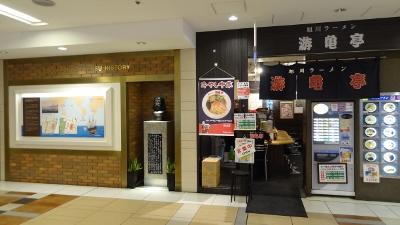
From the southernmost Cape Horne of Chile, head south through the Atlantic Ocean (in the book I read, sailing through the canals through the inland of Chile),
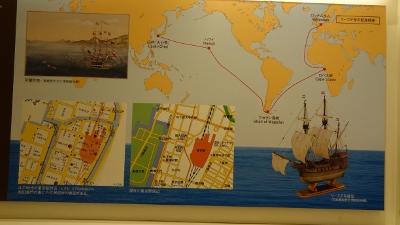
It is said that it drifted off Hawaii and to Usuki in Oita, Japan.
At this time, the English sailor William Adams was also on board. William Adams (later named Anjin Miura) was given a mansion in Nihonbashi, and the town name Anjincho was born.
In the separation zone of Yaesu Street, there is a statue of Jan Jooss Ten's face along with the "bell of peace" established one year after Chuo-ku declared peace. Every year, I think in the hot summer, I hope the world will be peaceful without conflict.
Here is the explanation of the bell of peace.
http://www.city.chuo.lg.jp/heiwa/monument/kane/
|
Links
|
![]() are many young
are many young ![]() female customers because they offer delicious food at reasonable prices, and two French male customers came to the next table. One is the same as me. The other men were ordering vissisoi soup, French pork saute. )
female customers because they offer delicious food at reasonable prices, and two French male customers came to the next table. One is the same as me. The other men were ordering vissisoi soup, French pork saute. )![]() bottles in the store, so I decided to come in the evening this time. The address of the shop is 4-4-16 Nihonbashi Honishicho. Please check here for access to the store. http://www.id3.jp/cul/
bottles in the store, so I decided to come in the evening this time. The address of the shop is 4-4-16 Nihonbashi Honishicho. Please check here for access to the store. http://www.id3.jp/cul/















